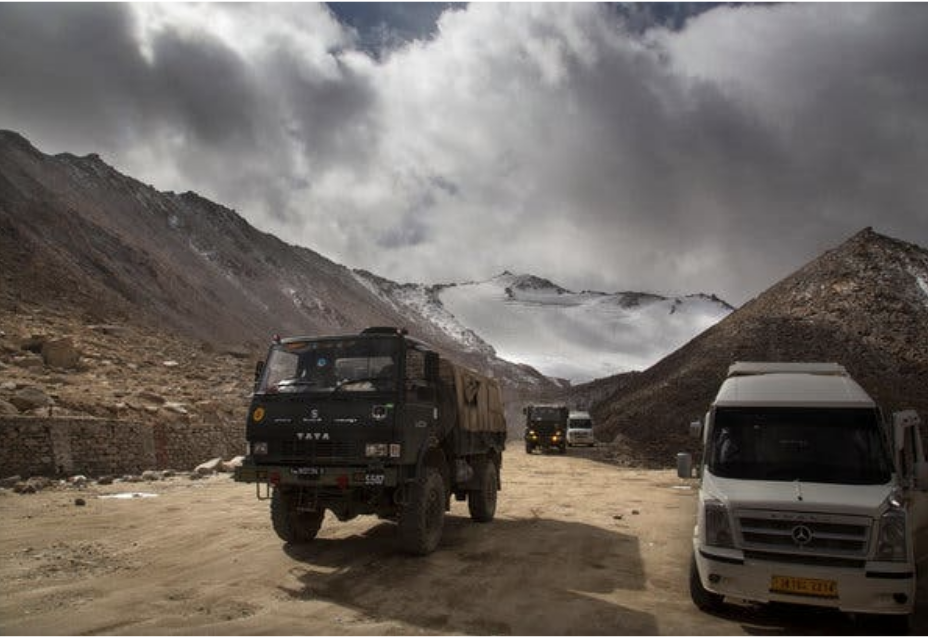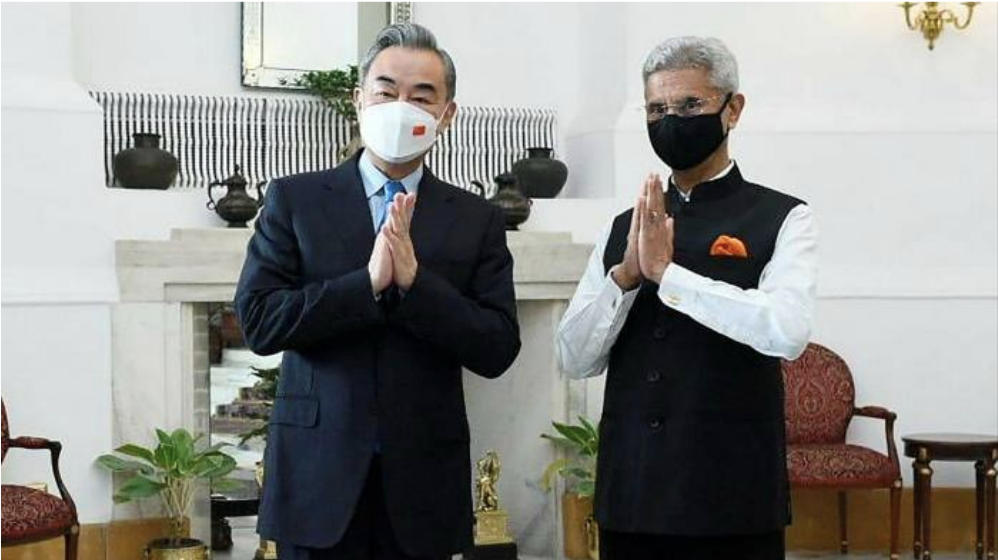Meeting of high-ranking Chinese and Indian officials shows hope for cooperation, with reservations
An Indian military truck traveling through Ladakh in 2018. Photo: Manish Swarup/ Associated Press
The foreign ministers of China and India met last week for the first time since border clashes between the two countries ensued nearly two years ago. Chinese foreign minister Wang Yi’s visit was part of a larger southeast Asia tour, which included Afghanistan and Nepal. The meeting highlighted China’s desire to normalize relations with India, even before settling long-standing border disputes, whereas Indian foreign minister Subrahmanyam Jaishankar emphasized that successful border negotiations are a precondition for India to normalize relations.
The meeting also took place after Li attended a meeting of the Organization of Islamic Cooperation in Islamabad, where he conveyed Beijing’s support for the OIC’s contention that the region’s residents should have sole control over the territory. India’s foreign ministry responded with criticism that China should not comment on internal Indian affairs.
China and India share a border extending roughly 2,000 miles, and both are nuclear-armed nations. There was no official negotiation or recognized international border until 1962, when a violent clash resulted from China’s occupation of the Ladakh region. A truce in 1962 established the current Line of Actual Control, designed to create a demarcation line and decrease the prospect of escalation.
In reality, many areas of the LAC remain in dispute, and both countries have attempted to assert claims to territory through building various infrastructure projects or sending troops on patrol in contentious regions. Until now, the situation along the LAC had remained relatively stable.
During the most recent escalation in April and May of 2020, Chinese soldiers entered into the Indian side of LAC at several points. Soldiers from both sides clashed in the Galwan Valley, resulting in the death of at least 20 Indian and four Chinese soldiers. Following the fighting, 15 rounds of military talks and eight diplomatic negotiations were held, eventually resulting in a pullback of troops from several hotspots along the LAC.
India’s unwillingness to resume normal relations before border negotiations take place stems from deep concerns that China will continue to violate the bilateral agreements enacted in 1993, 1996, and 2013. The 1993 agreement specifically states that in cases where personnel from either side cross the LAC, “upon being cautioned by the other side, they shall immediately pull back to their side of the Line of Actual Control.” It notes further that when a dispute arises, “the two sides shall jointly check and determine the segments of the Line of Actual control where they have different views as to its alignment.”
The 1996 agreement had a similar understanding that personnel “shall exercise self-restraint and take all necessary steps to avoid an escalation of the situation.” The India-China Border Defense Cooperation Agreement, which emphasizes the guidelines outlined in 1993 and 1996, was also established in 2013. Jaishankar referred directly to this phenomenon, stating that “surely the presence of a large number of troops in contravention of agreements is abnormal.”
Chinese foreign minister Wang Li and his Indian counterpart Subrahmanyam Jaishankar met in New Delhi last Friday. Photo: Associated Press via Twitter
China does not have a stellar record of adhering to LAC agreements, and New Delhi has not forgotten this, despite the meeting between Yi and Jaishankar, who stated that “the frictions and tensions that arise from China’s deployments since April 2020 cannot be reconciled with a normal relationship between the two neighbors.” Following the incident in 2020, New Delhi retaliated with economic measures, including stops on imports and continuing the ban on over 300 Chinese-owned mobile apps.
India maintains reservations regarding China’s activities in neighboring countries as well, deriving mainly from China’s allyship with Pakistan, India’s primary regional rival. It is also concerned with the competition for influence in Nepal, China’s economic influence in Bangladesh, Myanmar, and Sri Lanka.
Both countries still have a strong interest in preserving communication and diplomatic relations. China remains India’s largest trading partner, and over 100 Chinese companies operate within its boundaries. Bilateral trade has increased exponentially since 2000, although the balance tilts heavily in Beijing’s favor. Later this year, China will be hosting the BRICS summit, an economic association of Brazil, Russia, India, China, and South Africa. Beijing needs all member states to participate in order for the summit to be successful, and resolving the latest dispute will be crucial to doing so.
Li highlighted a very different approach during the meeting, in contrast to New Delhi’s position. He proposed an immediate transition of the border issue from a state of emergency to normal management. He asserted that “both sides view the bilateral relations from a long-term vision,” and “should view each other’s development with a win-win mentality.”
Above all, Li emphasized that China was not striving to compete with India, but instead cooperating, stating that “China is not pursuing a unipolar Asia.” The prospect for normal diplomatic relations will depend primarily on New Delhi’s ability and willingness to postpone a final border settlement in the spirit of economic and political cooperation with Beijing.


